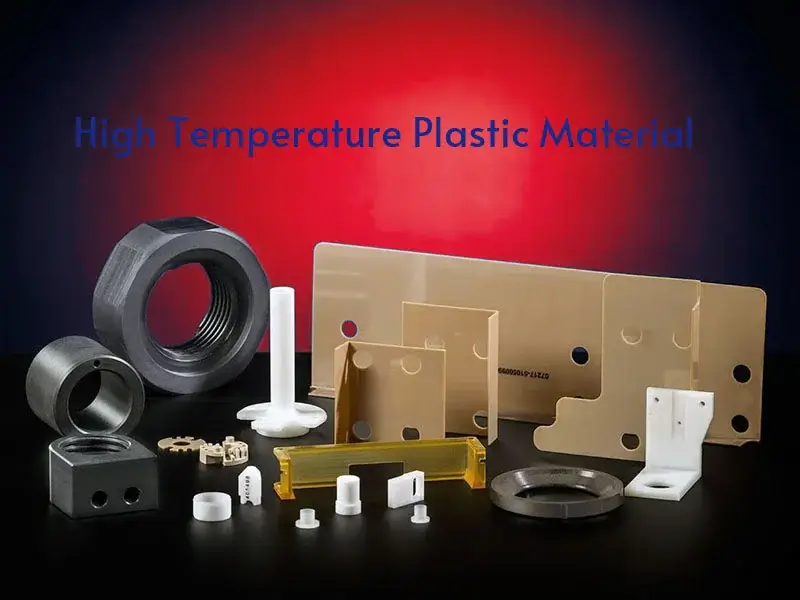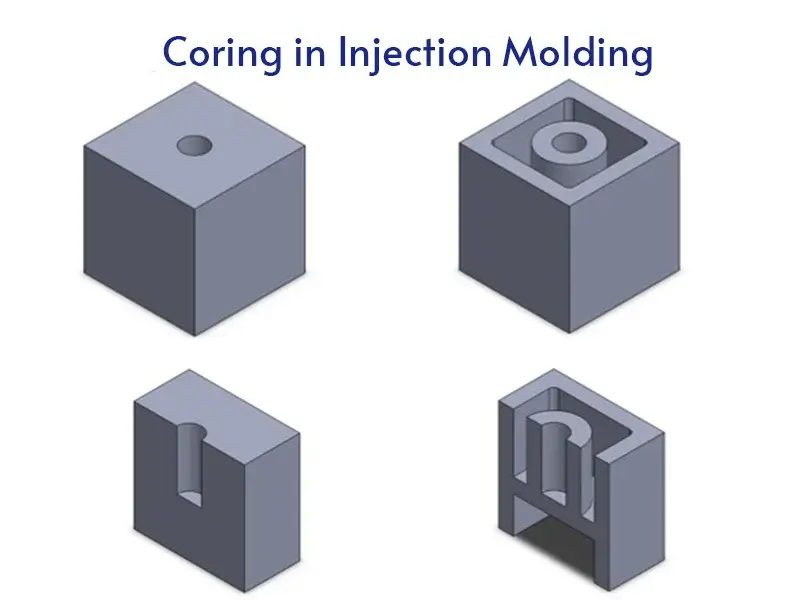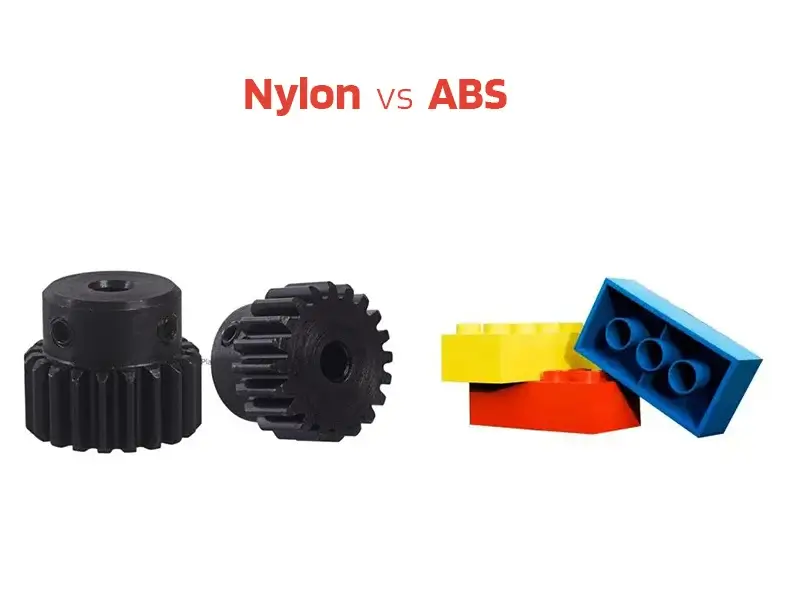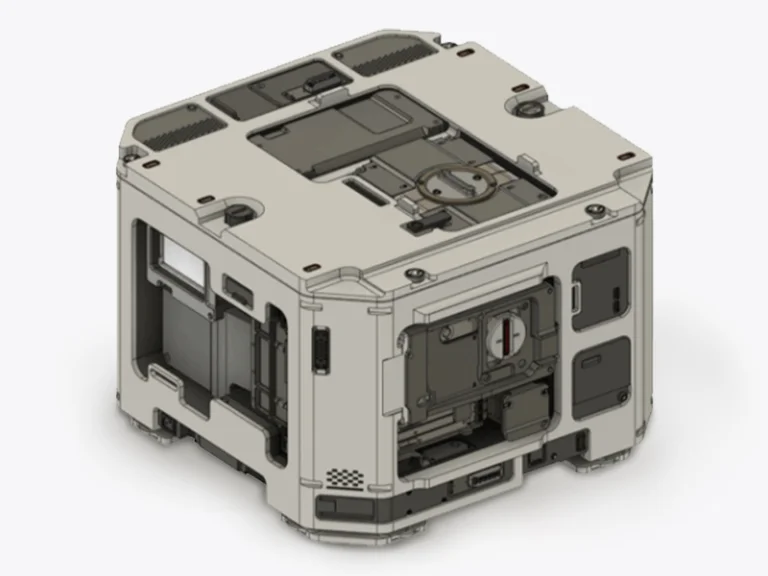Jetting in injection molding defects appear as linear marks, grooves, or protruding streaks on the surface of molded parts. Jetting defects in injection molding are caused by the premature freezing of the melt flow front, resulting in an uneven distribution of material within the cavity. This post will explore the causes and the effective prevention strategies for jetting in injection molding.
What is Jetting in Injection Molding?
Jetting is a surface defect that occurs on injection molded plastic parts, jetting marks in injection molding appear as irregular, serpentine, or “snake-like” marks on the part surface. It is defined as a defect where the molten plastic fails to properly adhere to the mold surface due to the high speed of injection. As the fast-moving melt flow enters a wider cavity section, it can create a jet stream effect that cools and solidifies before the rest of the material fills in, resulting in these wavy, linear patterns.
The jetting mark in injection molding is usually more prominent near the gate. There are examples of jetting defects.
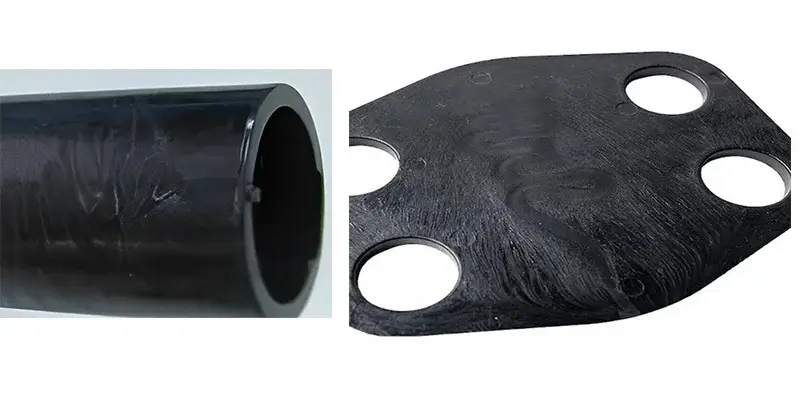
What are the Causes of Jetting in Injection Molding?
The main causes of jetting in injection molding are as follows:
Processing Conditions:
- High inject speed – High injection speed is one of the primary causes of jetting in injection molding. It creates a scenario where the molten material moves too quickly to properly fill the mold, resulting in an uneven flow. Instead of a smooth and uniform distribution, the material forms a thin, jet-like stream that cools and solidifies quickly upon contact with the mold walls. This leads to the characteristic wavy or snake-like pattern known as jetting.
- Extreme melt/mold temperature differentials – Large temperature differences increase the chances of the hot melt freezing prematurely against the cooler mold surface.
- Improper fill rate or holding pressure – Incorrect velocity/pressure profiles prevent complete melt flow and uniform packing.
Material Factors:
- Improper melt flow rate – Using a material with too high or low of a melt flow rate can contribute to jetting.
- Presence of air bubbles – Trapped air bubbles in the molten material can also initiate jetting.
Mold Design Factors:
- Small nozzle/runner openings – Restrictive openings that accelerate the melt flow can induce jetting.
- Improper gate location-Gates are positioned incorrectly can cause jetting by creating high-speed melt flow.
- Improper gate angle – Improperly angled gates that direct the flow too forcefully into the cavity.
- Abrupt transitions from thin to thick sections – Sudden changes in wall thickness disrupt uniform melt flow, leading to jetting.
- Lack of adequate venting – Insufficient venting traps air that gets jettisoned by the incoming melt stream, causing jetting patterns.
What are the Effects of Jetting on Injection Molded Parts?
Jetting in injection molding can have the following effects on injection-molded plastic parts:
Jetting Influence Aesthetic Issues on Visible Surfaces:
Jetting appears as irregular, serpentine, or “snake-like” marks on the surface of molded parts. These wavy, linear patterns are visually unappealing defects that detract from the part’s appearance, especially on visible exterior surfaces.
Jetting can also cause color variations or streaks on the part surface where the melt flow does not merge uniformly.
Jetting Influence Potential Structural Weaknesses:
In severe cases, jetting can create internal knit lines or areas where the melt flow does not fully weld together. These internal discontinuities can act as potential crack initiation sites, reducing the part’s mechanical performance and structural integrity.
While sometimes just a cosmetic issue, jetting defects are generally unacceptable as they indicate improper filling conditions during molding.
How to Prevent Jetting in Injection Molding?
To prevent jetting in injection molding, the key is to promote smooth, uniform melt flow into the cavity. Here are some effective methods to avoid jetting injection molding:
1. Optimizing Mold Design:
Properly size and locate the gate(s) to control melt flow speed into the cavity. Avoid gates that directly flow straight into thick sections.
Use overlapping, fan, or ear gates to promote a smooth melt transition from the gate into the cavity.
Incorporate gradual transitions between thin and thick wall sections to avoid abrupt changes.
Improve the venting system, and ensure adequate venting to allow trapped air to escape during filling.
2. Adjust Processing Parameters:
Reduce overall injection speed or use a velocity/pressure switch-over to control fill rates.
Heated Molds: Use heating elements to maintain a consistent mold temperature, ensuring that the material flows and cools evenly.
Maintain an optimal melt temperature to prevent premature freezing against the mold surface.
Adjust the mold temperature to balance the cooling rate and avoid large thermal differentials.
Fine-tune the holding pressure profile and timing to promote complete cavity packing.
3. Improve Melt Flow Characteristics:
Select a resin grade with an appropriate melt flow rate for the part geometry.
Ensure proper drying of hygroscopic resins to prevent moisture-related flow issues.
Use melt filters or degassing equipment to remove air bubbles that can initiate jetting.
4. Implement Design for Manufacturability (DFM):
Conduct mold flow analysis during the design phase to identify potential jetting issues.
Optimize part geometry, gate locations, and venting through DFM analysis and simulation.
5. Maintain Mold and Equipment:
Regularly clean the mold to remove any debris that could disrupt uniform filling.
Ensure proper maintenance of the injection molding machine, hot runner system, and auxiliaries.
How to Identify Jetting Defects?
Jetting in injection molding influences the injection molded parts. We should learn some ways to identify the jetting on plastic parts. Here are some key techniques for identifying jetting defects in injection molded parts:
Visual Inspection Techniques:
Look for jetting marks like wavy, serpentine, or “snake-like” lines on the part surface, especially pay attention to areas where the plastic flow changes direction or encounters obstacles like gates, sharp corners, and edges, as these spots are prone to jetting.
Dimensional Analysis of Molded Parts:
Take careful measurements of key dimensions, especially in areas likely to experience jetting like thick sections or flow path obstructions. Compare the measured dimensions to the design specifications to identify any discrepancies caused by uneven material distribution from jetting.
Process Monitoring (velocity, pressure, temperature):
Monitor process parameters like injection speed/velocity, melt temperature, and mold temperature, as excessive speeds or extreme temperature differentials can contribute to jetting. Analyze if any of these processing conditions deviate from the recommended ranges and could be initiating jetting defects.
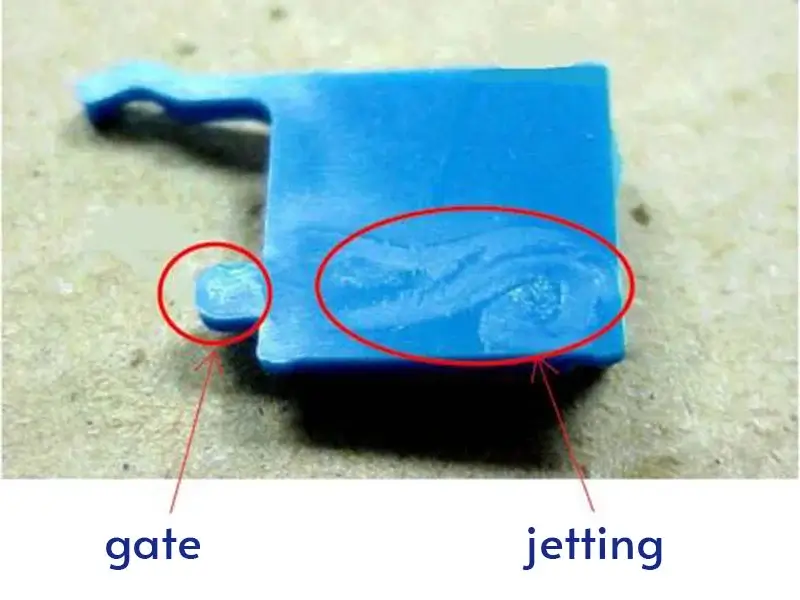
Conclusion
Jetting is a common and potentially serious defect that can occur during the injection molding process. The irregular, serpentine surface patterns created by jetting are not only aesthetically unappealing, but can also indicate underlying issues with mold design, processing parameters, or material preparation that may impact part quality and performance. Optimizing mold design, adjusting processing conditions, and considering material flowing rate will success prevent jetting defects and improve the molded products.
FAQ
What is a drooling defect in injection molding?
Drooling refers to the undesirable leakage or stringing of molten plastic from the nozzle area during or between injection cycles.
What are the common injection molding defects?
The common injection molding defects discussed are sink marks, flow lines/flow marks, burn marks/discoloration, weld lines, voids/ air pockets, flash, short shots, warping/twisting, jetting delamination, and nozzle drooling.
The cause of Jetting phenomenon
- Too fast injection speed: If the injection speed of the injection molding machine is set too fast, the molten plastic will produce a high flow speed when entering the mold, which may lead to the material not being able to evenly fill the entire mold cavity, forming a jet phenomenon.
- Improper mold design: The design of the mold will also affect the uniformity of flow. For example, the mold flow channel design is too narrow or there is a sharp change in direction, resulting in turbulence when the plastic flows, resulting in Jetting.
- Poor temperature control: Temperature control during injection molding is critical to the fluidity of plastics. If the temperature is too high or too low, it will lead to unstable plastic flow and increase the possibility of jet.
- Too low injection pressure: If the injection pressure is insufficient, the plastic flow is not smooth, which may lead to incomplete filling of some areas, resulting in jet phenomenon.
- Poor mold exhaust: The mold exhaust system is poorly designed or blocked, resulting in the smooth discharge of gas, which may also lead to blocked flow of molten plastic, resulting in Jetting.

